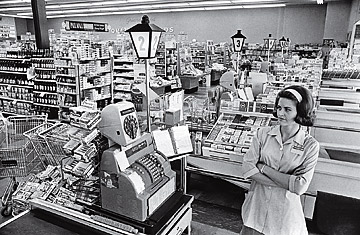
With the U.S. trillions of dollars in the hole, 70¢ an hour sounds like chump change. But it's a big boost for the millions of workers who earn that much extra as of July 24. The increase is the third and final uptick in a hike that has since 2007 boosted the federal minimum wage from $5.15 to $7.25. In total, the extra $2 and change translates into a yearly raise of some $4,400 for a full-time minimum-wage worker, nosing his or her family of four above the poverty line.
The minimum wage was first instituted in Australia and New Zealand in the 1890s in response to frequent, bitter strikes and was adopted by Massachusetts in 1912 to cover women and children. The first federal minimum-wage law passed in 1938, with a 25¢-per-hour wage floor and a 44-hour workweek ceiling for most employees, as a bulwark against the Great Depression. Wages must ensure a "minimum standard of living necessary for health, efficiency and general well-being," the act stipulated, "without substantially curtailing employment."
Ever since, however, critics and supporters have slugged it out over the minimum wage: some say it destroys jobs, while others argue that it increases productivity and boosts consumer purchasing power. As a result, in real-dollar terms, the minimum wage has risen and fallen on political tides, peaking in 1968 when an hour's pay bought nearly 5 gal. (19 L) of gas. By 2006, it paid for less than 2 gal. (8 L); meanwhile, some states raised their own standards (Washington mandates $8.55 an hour). From 1973 to 2007, as the minimum wage fell 22% in real dollars, domestic corporate profits jumped more than 50%--bloating the gap between rich and poor and fueling calls for a $10-an-hour "living wage" by 2010. For now, though, an extra 70¢ is as good as it gets.
